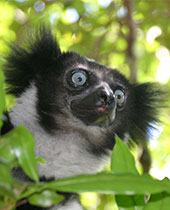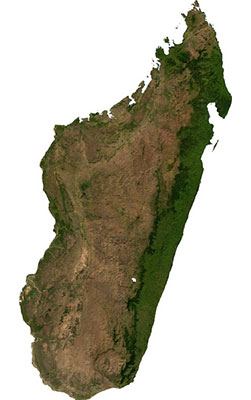
A satellite map provides an idea of the distribution of
tropical rainforests in Madagascar (wikicommons)
It is within this strip of rainforest that one of Madagascar’s most enchanting residents is found: the Indri.
Although it is much less famous than its cousin the Ring-tailed Lemur of the dry lands to the west, the Indri bears numerous distinctions. It is considered to be one of the two largest living lemur species of today. Its very short tail gives it something of an ape-like appearance – quite unlike the Ring-tailed Lemur or any other lemur – and it is also an excellent climber and jumper.
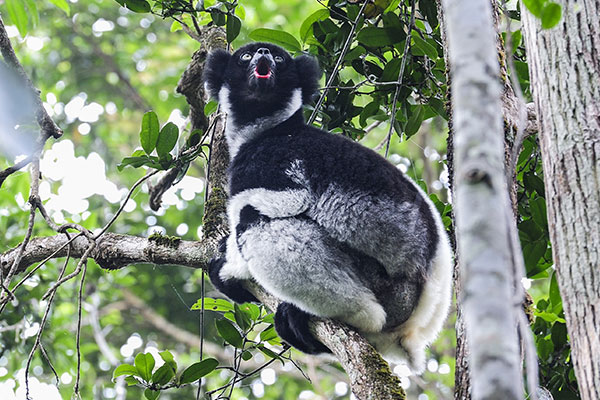
In fact, it requires continuous tree cover of rainforest to effectively travel in search of the food, primarily leaves. But what makes the Indri perhaps most notable among the lemurs is its vocalizations. Indri families can engage in bouts of singing up to several times daily. Produced mainly in the morning hours, the singing serves to advertize their presence to other troupes in the areas since family groups patrol territories. These calls are penetrating, mournful sounds that travel up to 2 km in distance, a useful trait when sightlines are effectively obscured by the very habitat they inhabit.
Click play to hear the Indri's wailing call. They also produce roaring and other sounds!
Unfortunately for the Indri, its rainforest habitat is coveted for fuel and agriculture, and it is considered critically endangered. Shrinking forest cover and fragmented forests mean that individuals cannot disperse from their natal territories to the outside with as much ease. Ironically, habitat fragmentation might have the effect of causing troupe sizes to increase, as youngsters tend to stay with their parents longer, unable to disperse. Exact numbers of remaining Indri are difficult to ascertain and remain poorly understood.
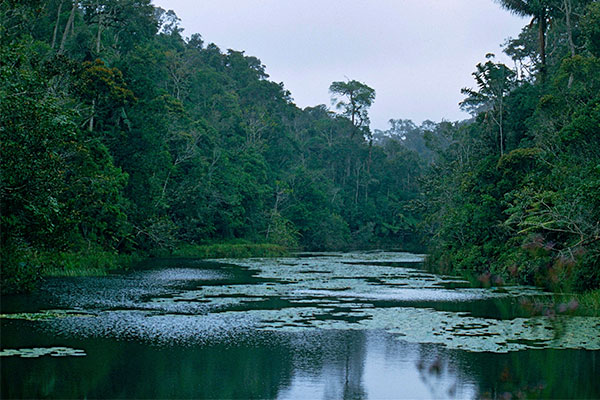
The Indri requires intact forest to thrive.
© Bernard Dupont
© Bernard Dupont
It is our hope that through nature travel, we can convey the value of conserving these habitats so that the Indri may continue to wail as it has for millennia.
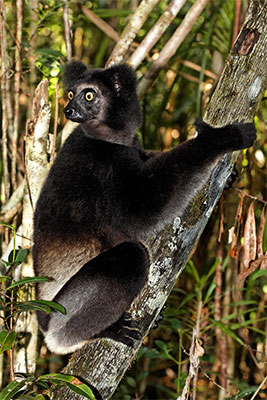
We hear and see the Indri during our visit to Andasibe-Mantadia National Park in eastern Madagascar. We’ll be returning in late 2023 on our next comprehensive tour.


